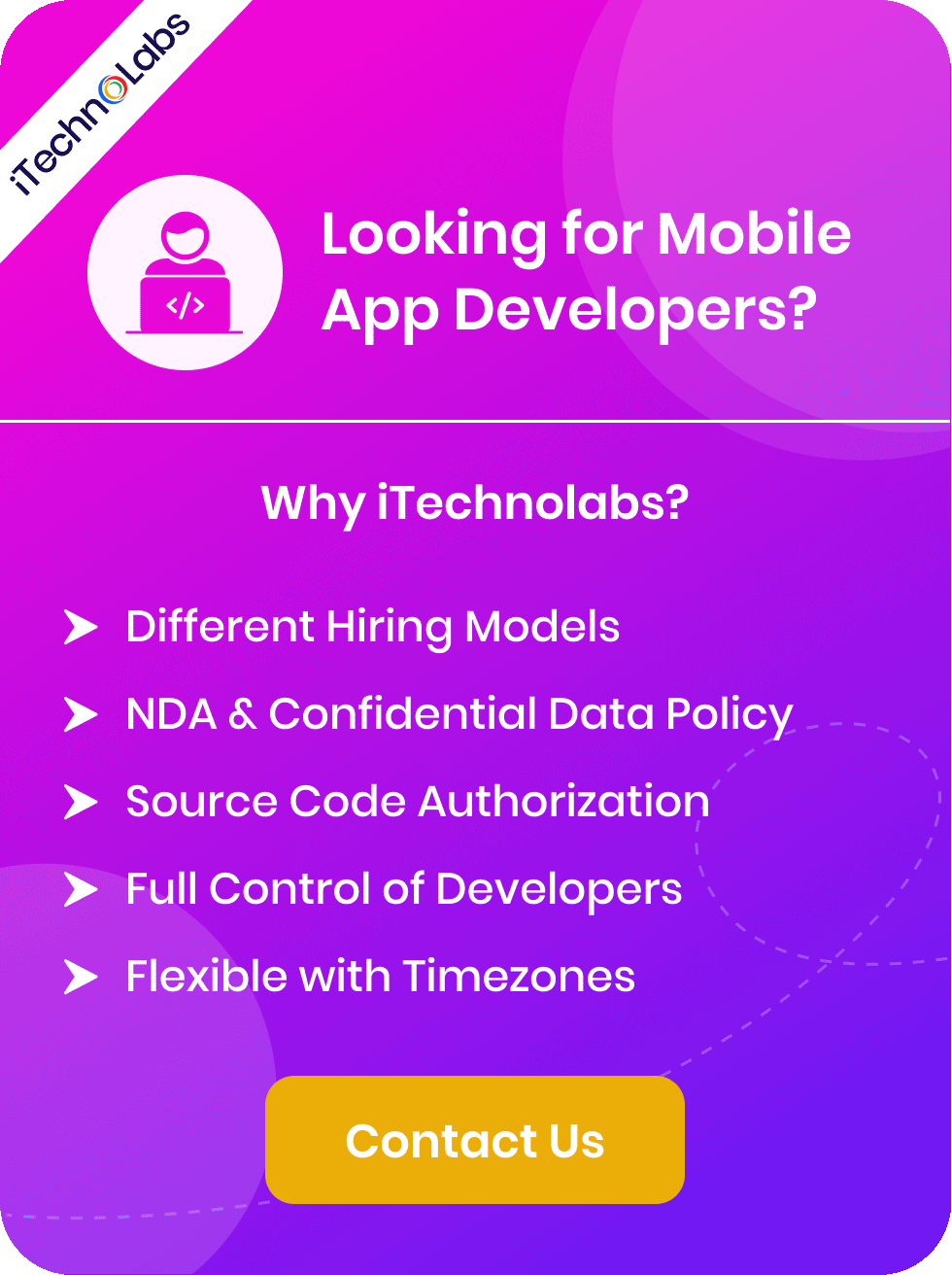Artificial intelligence (AI) is no longer just a buzzword but has become an integral part of our daily lives. From virtual assistants like Siri and Alexa, which help us manage our schedules, answer queries, and even control smart home devices, to self-driving cars that promise safer and more efficient transportation, AI’s influence is undeniable. It has permeated various industries and sectors, including healthcare, finance, education, entertainment, and even architecture.
In healthcare, AI aids in diagnosing diseases, predicting patient outcomes, and personalizing treatment plans. Advanced algorithms analyze medical images to detect anomalies with impressive accuracy, often surpassing human capabilities. Additionally, AI-driven predictive analytics are used to foresee potential health crises, enabling proactive measures to prevent them.
In finance, AI enhances fraud detection by analyzing vast amounts of transaction data to identify unusual patterns, facilitates automated trading to capitalize on market opportunities in real time, and improves customer service through chatbots that handle a multitude of queries, providing instant support. These intelligent systems also help in risk management, forecasting, and financial planning, making complex processes more efficient and reliable.
In education, AI personalized learning experiences by adapting to individual student needs, providing customized resources, and offering real-time feedback. Educational platforms powered by AI can assess student performance, identifying strengths and areas for improvement, thus fostering a more effective learning environment.
In entertainment, AI powers recommendation systems on streaming platforms, creating personalized experiences by suggesting content based on user preferences and viewing history. It also contributes to the creation of new content, such as music and visual arts, by analyzing trends and generating innovative ideas.
In architecture, AI is being used to design more efficient and sustainable buildings, optimizing energy use and improving urban planning. Machine learning models analyze environmental data to suggest optimal building materials and methods, significantly reducing carbon footprints. Furthermore, AI-based simulations assist architects in visualizing the impact of their designs on the surrounding environment, promoting harmony between new constructions and existing ecosystems.
AI in Architecture: Understanding the Technological Impact on the Industry
Artificial Intelligence (AI) has been rapidly transforming numerous industries and architecture is no exception. With its ability to process vast amounts of data and learn from it, AI has the potential to revolutionize the field of architecture by streamlining processes, increasing efficiency, and promoting sustainability.
One of the most significant impacts of AI in architecture is its role in building design. Traditional methods of designing buildings can be time-consuming and prone to human error. However, with AI-powered algorithms, architects can generate multiple design options within a shorter period while ensuring accuracy and precision. These algorithms analyze various factors such as site conditions, environmental data, client preferences, and building codes to create optimal designs that meet all requirements.
Moreover, AI’s predictive capabilities allow architects to assess and predict the structural integrity of a building, identify potential design flaws, and make appropriate adjustments. This not only saves time and resources but also ensures that buildings are safe and durable.
Apart from design, AI is also revolutionizing the construction process itself. Robotics and automation powered by AI have been increasingly used in construction sites, significantly improving efficiency and safety. Robots can handle repetitive or dangerous tasks such as bricklaying, welding, and painting with precision and speed. This allows human workers to focus on more complex tasks that require creativity and problem-solving skills.
Key Benefits of AI in Architecture
Some of the key benefits of AI in architecture include:
Innovation and Creativity
AI enables architects to explore new design possibilities and push the boundaries of creativity. By automating mundane tasks such as drafting and calculations, architects have more time to focus on innovative ideas and concepts. This allows them to experiment with unique materials, unconventional forms, and sustainable solutions, ultimately enhancing both the aesthetic and functional aspects of their designs. Furthermore, AI can assist in analyzing vast amounts of data to inform better decision-making, ensuring that the final structures are not only beautiful but also efficient and resilient.
Visualization and Communication
Visualization is a critical aspect of architecture, as it helps clients and stakeholders better understand the proposed design. AI-powered software can generate realistic 3D visualizations and virtual reality simulations that provide a more immersive experience for clients, allowing them to virtually walk through the space before construction begins. This technology aids in communication between architects, engineers, and contractors by offering a shared, detailed view of the project. Enhanced visualization not only improves collaboration but also reduces errors or misunderstandings throughout the project timeline, ensuring that everyone involved has a clear and accurate understanding of the design intent and execution plan. By leveraging these advanced tools, architectural projects can achieve higher levels of precision and client satisfaction.
Adaptability and Evolution
AI is constantly evolving, and so are the tools used in architecture. As technology continues to advance, new and more sophisticated AI-powered software will become available, giving architects even more capabilities to explore. This adaptability allows for continuous innovation and growth within the field of architecture. It also opens up opportunities for architects to expand their skills and incorporate AI into their workflow, making them more competitive in the industry. The integration of AI in architecture is not a one-time occurrence but an ongoing process that enables constant improvement and evolution.
Historical Insights
While AI may seem like a recent development in the field of architecture, its roots can be traced back to ancient times. The use of mathematical proportions and geometric principles in classical architecture is an early example of using artificial intelligence to achieve precise and harmonious designs. In more recent history, architects like Frank Lloyd Wright used natural patterns and organic elements as inspiration for their designs, demonstrating a similar approach to utilizing AI today. By studying these historical insights, we can further understand the potential benefits and applications of incorporating AI into architectural design.
Accessibility and Inclusivity
The use of AI in architecture also has the potential to improve accessibility and inclusivity in design. With the help of AI-powered tools, architects can analyze data and gather insights on how spaces are used by different individuals, such as people with disabilities or varying cultural backgrounds. This information can then be used to create more inclusive designs that cater to a diverse range of needs and preferences. Additionally, AI can assist in identifying potential barriers or safety hazards within a design, ultimately making spaces more accessible for all individuals.
Customization and Personalization
Incorporating AI into architecture can also open up opportunities for customization and personalization in design. With the use of AI, architects can gather data on individual preferences and behaviors to create tailored designs that cater to specific needs and desires. This could range from personalized lighting and temperature settings in smart homes to customized layouts in office spaces based on employee work habits. By utilizing AI, architecture has the potential to become even more accommodating and enjoyable for individuals.
Space Utilization and Efficiency
AI-powered tools and technologies can also assist architects in optimizing space utilization and improving efficiency in design. By analyzing data on how spaces are used, AI can suggest alternative layouts or designs that make better use of available space while still meeting the required functionalities. This not only leads to more efficient use of resources but also enables architects to create smarter, more functional, and sustainable designs.
Also Read: 60 AI Statistics and Global Trends on Artificial Intelligence
Examples and Real-Life Use Cases of Artificial Intelligence in Architecture
As AI continues to advance, we are seeing more and more real-life applications in architecture. Here are a few examples of how AI is being used in the field:
NBBJ’s Use of NLP in Design Brief Interpretation
The global architecture firm NBBJ has developed an innovative tool that leverages natural language processing (NLP) to analyze and interpret design briefs in a more sophisticated manner. This AI-powered tool helps architects gain a deeper understanding of the needs, preferences, and nuances of their clients’ requirements, allowing for a more precise and tailored design process. By incorporating advanced algorithms and machine learning techniques, the tool can effectively parse complex language and provide valuable insights. This ultimately makes it easier for architects to create designs that are not only aesthetically pleasing but also meet the specific functional and emotional needs of their clients.
Gensler’s Sketching Optimization with AI and Generative Design
Gensler, another leading architecture firm, has integrated artificial intelligence and generative design into their sketching process. This advanced tool assists architects in generating multiple design options within seconds, significantly reducing the time required to create initial sketches. By leveraging powerful algorithms to analyze comprehensive data on building codes, zoning laws, and other constraints, the tool can produce designs that meet all necessary requirements while still allowing for a high degree of creative freedom.
Additionally, this innovative technology enables architects to explore a wider array of design alternatives, making it easier to identify the most effective and aesthetically pleasing solutions. The use of AI in this way not only accelerates the design process but also enhances the precision and compliance of the designs with all relevant regulations and standards. As a result, architects can focus more on creativity and innovation, confident that the technical aspects are being thoroughly addressed. This fusion of technology and creativity represents a significant advancement in the field of architecture, promising to streamline workflows and elevate the quality of design outcomes.
SOM’s Building Energy Management Optimization
Skidmore, Owings & Merrill (SOM), a renowned architecture firm, is pioneering the use of building energy management optimization to create more sustainable and efficient structures. By leveraging real-time data from sensors and advanced analytics, SOM can optimize heating, cooling, lighting, and other systems in buildings to minimize energy consumption while maintaining a comfortable indoor environment.
This approach not only reduces operating costs for clients but also aligns with the growing demand for environmentally friendly design solutions. With this technology, architects can now consider energy efficiency as an integral part of their design process, rather than an afterthought or add-on feature. This shift towards proactive energy management marks a significant step forward in promoting sustainability in the built environment.
Perkins and Will’s Parametric Architecture Innovation
Perkins and Will, another leading architecture firm, has been utilizing parametric design to push the boundaries of architectural innovation. By using algorithms and computer programming, architects can generate complex and unique designs that would be nearly impossible to create manually. This approach allows for greater flexibility in design iterations and enables architects to explore a wider range of possibilities.
Moreover, by incorporating real-time data such as environmental conditions and user preferences, parametric design can result in more responsive and adaptable buildings. For example, a building’s facade could change shape or orientation based on incoming sunlight or adjust internal layouts according to occupant behavior patterns. With this technology, architects can create structures that not only look visually striking but also perform optimally in various contexts.
Jacobs Engineering’s Architectural Mapping Improvements
Jacobs Engineering, a global architecture and engineering firm, has been at the forefront of utilizing mapping technology to enhance its architectural design process. By integrating Geographic Information Systems (GIS) into their workflow, architects can gather and analyze data from various sources such as topography, climate data, and infrastructure networks.
This information can then be used to inform the design of a building in terms of its location, orientation, materials, and even structural systems. By considering these factors in the early stages of design, architects can create buildings that are better adapted to their surroundings and have minimal impact on the environment. GIS technology also allows for more efficient site planning and resource management, resulting in cost savings for clients.
Quintain’s Enhancement of Urban Planning with BIM
In addition to the design process, technology has also greatly impacted urban planning and development. Quintain, a leading real estate developer in the UK, has utilized Building Information Modeling (BIM) to enhance its master planning for large-scale projects such as the redevelopment of Wembley Park.
With BIM, Quintain can create virtual 3D models of their developments, allowing for more accurate visualization and evaluation of different design options. This not only leads to better decision-making but also aids in communication with stakeholders and potential buyers. Additionally, BIM allows for greater collaboration between different disciplines involved in the project, resulting in more coordinated and efficient planning.
AECOM’s Generative Design with Autodesk’s Project Refinery
Another example of technology driving innovation in the architecture and construction industry is AECOM’s use of Autodesk’s Project Refinery for generative design. Generative design uses algorithms to generate multiple design options based on specific parameters and constraints set by the user.
This tool allows architects and engineers to explore a wide variety of design possibilities, taking into account factors such as structural performance, energy efficiency, and cost. With this data-driven approach, AECOM has been able to create more optimized and sustainable designs that would have been nearly impossible with traditional methods.
Caterpillar’s Safety Risk Identification Tool
Technology has also played a significant role in improving safety in construction sites. Caterpillar, one of the world’s largest manufacturers of construction equipment, has developed a Safety Risk Identification Tool (SRIT) that uses artificial intelligence to analyze safety data from various sources and identify potential risks on job sites.
By utilizing this tool, construction companies can proactively address safety hazards before they occur, ultimately reducing incidents and injuries. This not only ensures the well-being of workers but also increases productivity and reduces costs associated with accidents.
AI Implementation in Architecture: Key Steps and Considerations
As AI technology continues to advance, architects and construction professionals must be prepared to incorporate it into their workflows. Here are some key steps and considerations for successfully implementing AI in architecture:
Compile and Prepare Data
The first step in utilizing AI for design is to compile and organize the necessary data. This includes project parameters, design constraints, and any relevant information or feedback from stakeholders. The more comprehensive and accurate the data, the better the results will be.
Specify Your Goals and Objectives
Before implementing AI, it’s essential to have a clear understanding of your goals and objectives. Are you looking to improve energy efficiency, reduce costs, or enhance design options? Perhaps you’re aiming to streamline operations, improve customer satisfaction, or gain deeper insights from your data. By setting specific, measurable goals, you can better determine which AI tools and techniques will be most beneficial for your projects. Additionally, having a well-defined strategy can help align your team’s efforts and ensure that everyone is working towards the same targets, ultimately leading to more successful AI integration.
Choose AI-Related Tools & Technologies
There are numerous AI-related tools and technologies available, and it’s important to choose the ones that best fit your goals and objectives. This could include machine learning algorithms for optimizing building performance or generative design software for exploring different design options quickly. Additionally, consider whether you want to develop and integrate custom AI solutions or use existing ones.
Create AI Models and Algorithms
Once you have your goals, data, and tools in place, it’s time to create AI models and algorithms. This step involves using the compiled data to train machine learning models or develop generative design algorithms that can analyze, learn from, and make decisions based on the data. Typically, this requires selecting the appropriate algorithms and techniques that best fit the nature of your data and the problems you aim to solve. It’s also crucial to have a diverse dataset for training to ensure that the AI systems can handle various scenarios effectively. Furthermore, the quality and quantity of your data play a significant role in determining the accuracy and reliability of your models. Regularly updating and refining your datasets can help maintain the performance and relevance of your AI solutions in the long run.
Integrate AI with Design Software
Integrating AI with design software is a critical step in successfully implementing AI into the building design process. This involves incorporating AI models and algorithms into existing design platforms, such as Building Information Modeling (BIM) software or Computer-Aided Design (CAD) tools. By doing so, architects and engineers can seamlessly access AI-generated insights and recommendations within their familiar design environments, making the adoption of AI more user-friendly and efficient.
Establish and Streamline Workflows
Integrating AI into the building design process also requires establishing and streamlining workflows to ensure a smooth and efficient collaboration between AI systems and human designers. This involves identifying the specific tasks that can be automated by AI, setting up checkpoints for validation and verification of AI-generated outputs, and establishing protocols for communication between AI systems and human designers. By creating clear workflows, teams can work together seamlessly to leverage the full potential of AI in building design.
Monitor and Evaluate Performance
Once AI is integrated into the building design process, it is crucial to continuously monitor and evaluate its performance. This includes tracking metrics such as accuracy, speed, and efficiency of AI-generated outputs compared to human-generated ones. Regularly analyzing this data can help identify areas for improvement and guide the refinement and optimization of AI models. Additionally, monitoring performance can also provide valuable insights into the effectiveness of AI in different stages of the design process.
Read More: Top 10 AI Apps in the USA
AI in Architecture Challenges and Potential Solutions to Consider
Along with the benefits and opportunities, there are also challenges to consider when integrating AI into architecture. Some potential challenges include data privacy concerns, bias in AI algorithms, and the need for specialized training and resources. However, these challenges can be addressed through proactive measures such as implementing ethical guidelines for AI development, ensuring diverse datasets for training AI models, and providing proper education and training for design teams on how to effectively use AI tools.
Data Availability and Quality
One of the main challenges in implementing AI in architecture is access to high-quality data. AI models require large and diverse datasets to be trained effectively, which can be difficult to obtain in the architecture industry where there may be limited publicly available data. To address this challenge, architects and designers can collaborate with data scientists and researchers to collect and curate relevant datasets for their specific design projects.
Complexity and Adaptability
Another challenge in AI integration is the complexity of algorithms and their adaptability to specific design tasks. AI models often require a significant amount of computing power, specialized software, and technical expertise to develop and deploy. This can be a barrier for smaller firms or individual architects looking to integrate AI into their practice. To overcome this challenge, there are now user-friendly AI tools available that do not require extensive technical knowledge, making it more accessible for designers of all levels.
Interoperability and Integration
Integrating AI into the design process also brings up challenges related to interoperability and integration with existing software and systems. Design teams may need to invest in new technology or modify their current processes to incorporate AI effectively. Additionally, there is a risk of data silos if AI tools are not integrated properly into existing workflows. To overcome this challenge, it is important for architects to carefully evaluate their current processes and determine how AI can be seamlessly integrated.
Security and Privacy
As with any technology, there are also concerns surrounding security and privacy when it comes to using AI in the architecture industry. Design data can be highly sensitive, containing proprietary information, client details, and innovative design concepts. There is a substantial risk of malicious attacks or breaches when working with AI tools, which could lead to intellectual property theft or unauthorized access to confidential information. To address these serious concerns, architects must ensure that they have proper measures in place to protect their data, such as robust encryption methods and secure access protocols. Additionally, they must comply with privacy regulations like the General Data Protection Regulation (GDPR) to safeguard clients’ personal information and uphold industry standards. Regular audits, staff training, and staying updated with the latest cybersecurity trends are also vital steps in maintaining a secure and trustworthy environment for AI integration in architectural projects.
Implications for Ethics and Society
The use of AI in architecture also raises ethical and societal implications. As AI systems become more advanced and capable of automating complex tasks, there is a concern that they may replace human workers, leading to job displacement. This could have an impact on the labor market and potentially widen the gap between skilled and unskilled workers.
In addition, there is a risk of bias in AI algorithms if they are not properly developed and trained. This could result in discriminatory outcomes or reinforce existing inequalities in society. Architects must carefully consider these implications when implementing AI tools and ensure that they are used ethically and responsibly.
How can iTechnolabs help you to build AI in Your Architectural Project?
As a leading technology solutions provider, iTechnolabs can assist architects in integrating AI into their projects in various ways. Our expertise extends to optimizing design processes, enhancing project management through predictive analytics, and improving sustainability by leveraging intelligent energy management systems. By partnering with iTechnolabs, architects can unlock the full potential of AI to drive innovation and efficiency in their work.
- Custom AI Solutions: Our team of experienced developers and data scientists can develop custom AI solutions tailored to the specific needs and requirements of your architectural project. This could include creating algorithms for automating design processes, optimizing building performance, or analyzing large sets of data.
- Integration with Existing Software: We can also integrate AI capabilities into your existing software systems, making them more efficient and effective. This could involve incorporating machine learning algorithms into BIM (Building Information Modeling) software or implementing chatbots for better communication with clients.
- Data Collection and Analysis: With our expertise in data analytics, we can assist in collecting and analyzing data from various sources, such as weather patterns, user behavior, and building performance. This data can then be used to train AI algorithms for better decision-making in the architectural design process.
- Ethical Considerations: As mentioned earlier, ethical considerations are crucial when it comes to implementing AI in architecture. At iTechnolabs, we prioritize responsible and ethical AI development, ensuring that our solutions do not perpetuate biases or discrimination.
- Training and Support: Our team will also provide training and ongoing support for the implementation of AI in your architectural project. We understand that this technology may be new to some architects, so we make sure to equip them with the necessary skills and knowledge to utilize AI effectively.
Are you planning to build AI in Your Architectural Project?
Contact us!
Partnering with iTechnolabs for AI integration in your architectural project offers numerous advantages that can elevate your practice to new heights. Firstly, our team brings a wealth of expertise and experience in AI development, ensuring that you receive cutting-edge, innovative solutions tailored to your unique needs. By leveraging advanced algorithms and machine learning techniques, we can help you automate complex design tasks, leading to increased productivity and reduced manual errors.
- Expertise in AI Development: Our team consists of seasoned professionals with extensive experience in AI and machine learning, ensuring the delivery of high-quality and innovative solutions tailored to your architectural needs.
- Enhanced Productivity: By automating complex design tasks and streamlining workflows through AI, we help your team achieve higher productivity and efficiency, reducing time spent on repetitive manual tasks.
- Reduced Errors: Advanced algorithms and machine learning techniques minimize the risk of human errors, leading to more accurate designs and better project outcomes.
- Data-Driven Insights: Our data collection and analysis services provide valuable insights from various sources, aiding in informed decision-making throughout the design process.
- Ethical AI Implementation: We prioritize ethical considerations in AI deployment to ensure fair and unbiased solutions, aligning with the highest standards of responsible AI development.
- Comprehensive Training and Support: Our commitment goes beyond implementation; we provide thorough training and ongoing support to ensure your team is well-equipped to leverage AI technology effectively.
- Customized Solutions: We understand the unique requirements of each project and offer bespoke AI solutions that address specific challenges and goals within your architectural practice.
- Innovation and Competitiveness: Integrating AI with our expertise positions your practice at the forefront of innovation, giving you a competitive edge in the evolving landscape of architectural design.
Important: How Much Does It Cost To Build an Artificial Intelligence Project
Conclusion:
Leveraging AI in architectural design can revolutionize the industry, leading to enhanced productivity, reduced errors, data-driven insights, and ethical implementation. Our comprehensive training and support ensure your team is equipped to leverage AI effectively while customized solutions cater to your unique needs. With our expertise and cutting-edge technology, we bring innovation and competitiveness to your practice, paving the way for a successful future in architectural design. By embracing AI, you can elevate your designs and deliver high-quality solutions that meet the evolving demands of the industry.
FAQs
How is AI used in architecture?
AI is increasingly being utilized in architecture to enhance and streamline various processes, such as design optimization, generative design, project scheduling, and management, energy efficiency analysis, and more. For instance, AI can analyze vast amounts of data to suggest the most efficient design solutions, saving time and resources. Generative design allows architects to input specific parameters, and AI can generate numerous design alternatives that meet those criteria. Additionally, AI helps in project scheduling and management by predicting potential delays and suggesting adjustments to keep the project on track. In terms of energy efficiency, AI can analyze building performance and recommend adjustments to improve sustainability. Furthermore, AI can assist in generating complex geometries that would be difficult to achieve manually and provide data-driven insights for better decision-making, ensuring that every aspect of the architectural process is optimized for success.
What is the future of AI in architecture?
The future of AI in architecture is vast and promising. As technology continues to advance, we can expect AI to play a more significant role in various aspects of architectural design, such as project management, building performance analysis, and construction. With the help of AI, architects will be able to create more sustainable designs that are tailored to meet the specific needs of their clients. Additionally, AI can assist in creating more efficient building systems and reducing energy consumption. The possibilities are endless, and we can only expect AI to continue pushing the boundaries of what is possible in architecture.
What is generative AI in architecture?
Generative AI in architecture is a technology that uses algorithms and machine learning to generate design alternatives based on specific parameters provided by the architect. This process allows architects to explore a vast range of design options quickly, making it an efficient tool for finding the most optimal solution for a given project. Generative AI can also consider factors such as sustainability, energy efficiency, and cost-effectiveness while producing these design alternatives, providing architects with valuable insights that can inform their decision-making process.
How does AI impact the role of architects?
AI is transforming the role of architects in numerous ways. With the help of AI, architects can now automate mundane tasks such as data analysis and documentation, allowing them to focus more on the creative aspects of their work. Additionally, AI technology enables architects to collaborate more effectively with other professionals involved in a project, making communication and coordination more efficient. Furthermore, by utilizing AI algorithms and machine learning models, architects can gain valuable insights into building performance and sustainability factors that can influence their design decisions for the better. Overall, AI is helping to streamline processes and enhance the capabilities of architects, making their jobs more efficient and effective.






